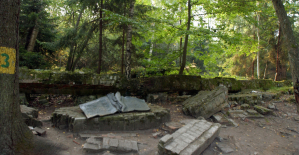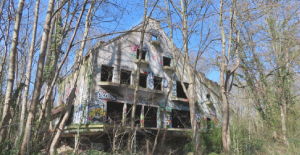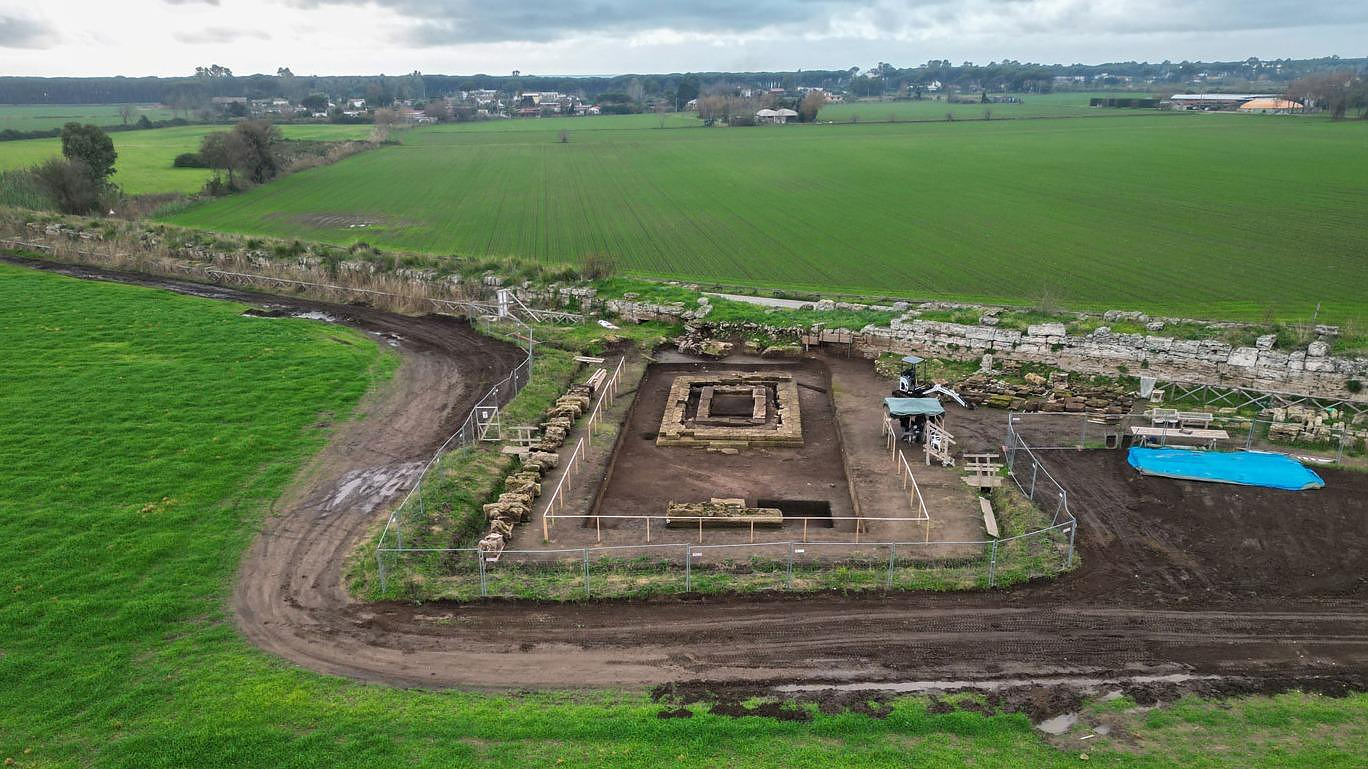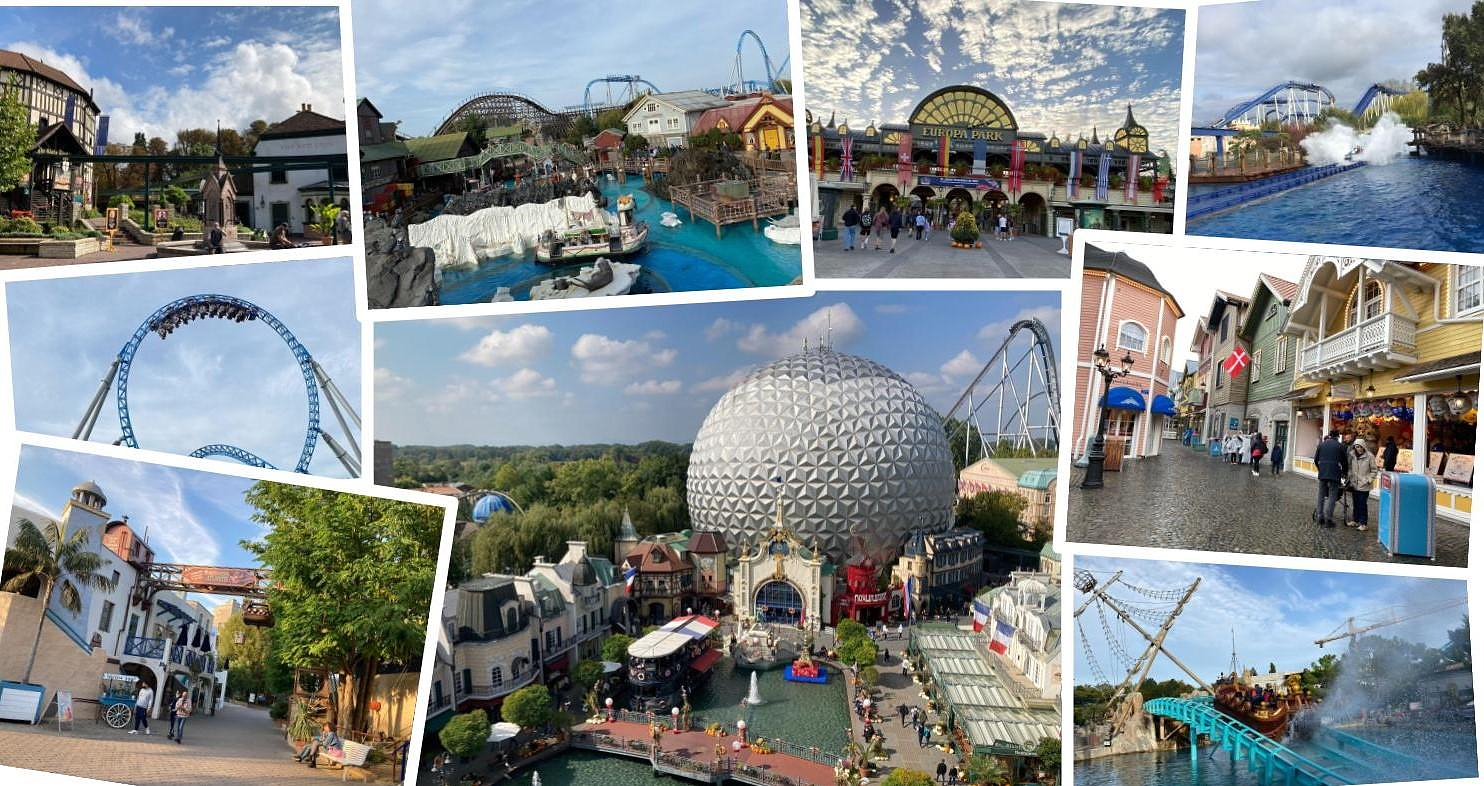The Italian Ministry of Culture announced the discovery of two Doric-style Greek temples in the ancient city of Poseidonia-Paestum. “These sacred buildings shed new light on the origins and urban development of the polis of Magna Graecia and provide crucial data for understanding the evolution of Doric architecture in Poseidonia and Magna Graecia,” we can read on the ministry website.
Located about a hundred kilometers south of Naples, this archaeological site is an ancient Greek colony (7th century BC), conquered by the Lucanians then the Romans (3rd century BC). It therefore has the particularity of bringing together the remains of several civilizations.
The first temple, discovered in June 2019 and studied from September 2022, dates back to the first decades of the 5th century BC and measures 11.60 by 7.60 meters, with a peristasis (exterior colonnade) of four times six columns. Only part of the stylobate, the base of the columns, and of the crepidome, the tier-shaped steps on which the entire building rests, is preserved. But its history is even older, according to the ministry.
Inside the temple structure, below the peristasis, 14 fragmentary Doric capitals and other architectural materials were reused, probably for ritual purposes. Their typology is comparable to that of the capitals of the temple of Hera I, known as the "Basilica", the oldest of the three major temples of Paestum. “These latest exceptional discoveries show that it is another temple, of modest dimensions but with architectural characteristics close to those of the first great temples of Pest and dating from the 6th century BC,” explains the Italian Ministry of Culture. . For reasons still unknown, perhaps collapse, this structure was replaced by a new temple in the same area at the beginning of the following century.
The interest of these discoveries is not limited to the architecture and history of the sanctuary of which these temples were part. They also make it possible to broaden researchers' knowledge of the urban layout of the city and its Greek origin. Thus, behind the temple, the collapse of the internal face of the ancient wall was dismantled: there was discovered the route of a beaten road, parallel to the temple and oriented differently in relation to the walls. This discovery is interesting because it shows that at the end of the 6th century BC, when the oldest temple was erected, the city of Poseidonia did not yet have defensive walls. This sanctuary was therefore built in a strategic location, not far from the sea, thus protecting the urban space from potential attacks.
“The new Pestan excavations are yet another demonstration of the fact that study and research are cornerstones of cultural heritage management and fundamental tools for the protection and enhancement functions that the State is called upon to exercise (. ..),” underlined the general director of the Museums, Massimo Osanna. He specifies that this type of valorization is a way of improving access to knowledge and cultural heritage, “with the aim of making it “readable” in the eyes of a public with different abilities, but which deserves the same possibilities. access.” These are the objectives pursued by the National Museum System, “an ambitious project at the national level which aims to set minimum quality levels of valorization for all cultural sites, including the Archaeological Park of Paestum and Velia”, adds Massimo Osanna.
The Poseidonia-Paestum excavation site is complex and requires the collaboration of archaeologists, restorers, engineers, architects and geologists. The excavations will soon be completed and an access road will be created to make the sanctuary accessible to the public, according to the direction of the Paestum and Velia Archaeological Park, Tiziana D'Angelo.

 Who was Dror Or, the Israeli father who died as a hostage in the hands of Hamas?
Who was Dror Or, the Israeli father who died as a hostage in the hands of Hamas? “Pay in cash”: at his trial, Donald Trump faced with an embarrassing recording
“Pay in cash”: at his trial, Donald Trump faced with an embarrassing recording Italy: a grandmother accidentally serves a bottle filled with wine to a baby, he has an alcoholic coma
Italy: a grandmother accidentally serves a bottle filled with wine to a baby, he has an alcoholic coma The mysterious skeletons of Hermann Göring's villa
The mysterious skeletons of Hermann Göring's villa Children born thanks to PMA do not have more cancers than others
Children born thanks to PMA do not have more cancers than others Breast cancer: less than one in two French women follow screening recommendations
Breast cancer: less than one in two French women follow screening recommendations “Dazzling” symptoms, 5,000 deaths per year, non-existent vaccine... What is Lassa fever, a case of which has been identified in Île-de-France?
“Dazzling” symptoms, 5,000 deaths per year, non-existent vaccine... What is Lassa fever, a case of which has been identified in Île-de-France? Sánchez cancels his agenda and considers resigning: "I need to stop and reflect"
Sánchez cancels his agenda and considers resigning: "I need to stop and reflect" Health carpooling, this source of savings which arouses the ire of patients and taxis
Health carpooling, this source of savings which arouses the ire of patients and taxis Tesla Model 3, MG4 and Dacia Spring.... With the end of the ecological bonus, these electric cars produced in China are seeing their sales fall
Tesla Model 3, MG4 and Dacia Spring.... With the end of the ecological bonus, these electric cars produced in China are seeing their sales fall For the 2024 Olympics, Airbnb commits to fighting prostitution in its accommodation
For the 2024 Olympics, Airbnb commits to fighting prostitution in its accommodation “Shrinkflation”: supermarkets obliged to alert their customers from July 1
“Shrinkflation”: supermarkets obliged to alert their customers from July 1 The electro of Justice and the echoes of Portishead
The electro of Justice and the echoes of Portishead 1924 Olympic Games: according to his daughter, the hero of Chariots of Fire was “not a bigot”
1924 Olympic Games: according to his daughter, the hero of Chariots of Fire was “not a bigot” The “German Brothel” in Yvelines: an uncertain future for the ruined residence
The “German Brothel” in Yvelines: an uncertain future for the ruined residence The eye of the INA: when Paul Auster visited Bernard Pivot
The eye of the INA: when Paul Auster visited Bernard Pivot Omoda 7, another Chinese car that could be manufactured in Spain
Omoda 7, another Chinese car that could be manufactured in Spain BYD chooses CA Auto Bank as financial partner in Spain
BYD chooses CA Auto Bank as financial partner in Spain Tesla and Baidu sign key agreement to boost development of autonomous driving
Tesla and Baidu sign key agreement to boost development of autonomous driving Skoda Kodiaq 2024: a 'beast' plug-in hybrid SUV
Skoda Kodiaq 2024: a 'beast' plug-in hybrid SUV The home mortgage firm rises 3.8% in February and the average interest moderates to 3.33%
The home mortgage firm rises 3.8% in February and the average interest moderates to 3.33% This is how housing prices have changed in Spain in the last decade
This is how housing prices have changed in Spain in the last decade The home mortgage firm drops 10% in January and interest soars to 3.46%
The home mortgage firm drops 10% in January and interest soars to 3.46% The jewel of the Rocío de Nagüeles urbanization: a dream villa in Marbella
The jewel of the Rocío de Nagüeles urbanization: a dream villa in Marbella Facing Jordan Bardella, the popularity match turns to Gabriel Attal’s advantage
Facing Jordan Bardella, the popularity match turns to Gabriel Attal’s advantage Europeans: a senior official on the National Rally list
Europeans: a senior official on the National Rally list Blockade of Sciences Po: the right denounces a “drift”, the government charges the rebels
Blockade of Sciences Po: the right denounces a “drift”, the government charges the rebels Even on a mission for NATO, the Charles-de-Gaulle remains under French control, Lecornu responds to Mélenchon
Even on a mission for NATO, the Charles-de-Gaulle remains under French control, Lecornu responds to Mélenchon These French cities that will boycott the World Cup in Qatar
These French cities that will boycott the World Cup in Qatar Monaco - Clermont: Minamino cornerstone, Fofana essential, the Clermont defense overwhelmed... The tops and the flops
Monaco - Clermont: Minamino cornerstone, Fofana essential, the Clermont defense overwhelmed... The tops and the flops Gymnastics: two gold medals for the Italian Manila Esposito during the European Championships
Gymnastics: two gold medals for the Italian Manila Esposito during the European Championships Champions Cup: in pain, Leinster beats Northampton and qualifies for the final
Champions Cup: in pain, Leinster beats Northampton and qualifies for the final Liga: Real Madrid crowned champion of Spain after FC Barcelona's defeat in Girona
Liga: Real Madrid crowned champion of Spain after FC Barcelona's defeat in Girona


















